9 Composing an Aria
Aria
Nearly every instrumental form that we are familiar with in the Western canon began as a vocal form. The vocal aria is one of the most varied genres, taking on many guises throughout the past five hundred years. During the Baroque era, the aria was itself sometimes built on the rhythms of instrumental dance movements. Henry Purcell (1659-95), one of the first opera composers in the English tongue, used such an approach in some of his pieces. We will be creating a new piece in the style of Purcell for a solo voice and accompaniment. In so doing, we will explore some of the many techniques of the period that endured.
Our composition will, as well, be based on the Baroque dance form of the sarabande (a slow, often somber dance-based structure in 3/4 time). We will structure the sarabande as a rondo with a four bar refrain (or ritornello – Italian for ‘return’). The idea of the ritornello is to act as the anchor of a rondo: no matter how far the composer may stray in the development of the music, s/he must always come back to this refrain. Therefore, the ritornello should have a distinct and engaging character in order to sustain interest for the listener who will be hearing it repeatedly throughout the piece.
Syncopation. A key element Purcell exploited in numerous pieces was the rhythmic device of syncopation. His method of implementing syncopation involved breaking up the constituent voices of a series of chords into two strata of independent activity and offsetting one by a half beat (or less). In our piece we have begun with a very simple progression in even quarter notes and then displaced the upper part by one eighth note.
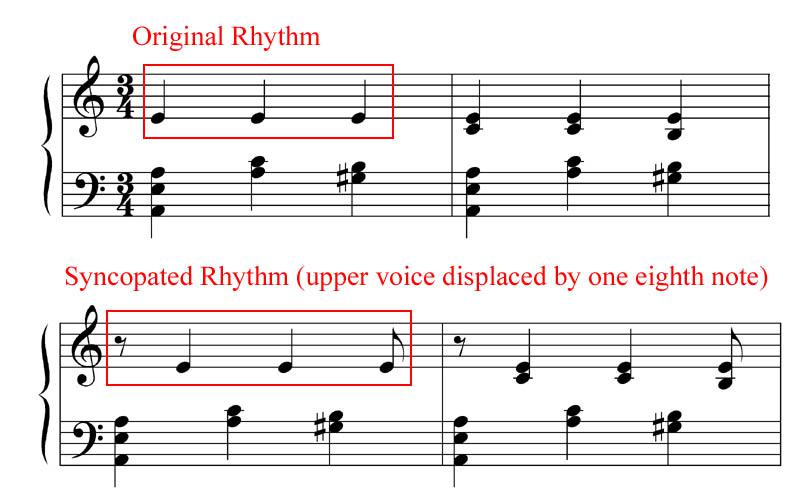
The Rondo and the Ritornello. The rondo is one of the most uncomplicated forms, alternating refrains/ritornelli (section A) with new material (sections B, C, D, etc.). Even in this there remains ample room for alterations to the basic structure. Before getting too far ahead of ourselves though, we must begin by composing our A section. We have decided to keep to a standard four bar phrase structure. Notice our progression ends on the dominant to allow for closure to arrive with the succeeding downbeat. Also notice that we have paired two A sections, the first as an instrumental introduction, the second with the vocal melody. Using this system, the melody is not composed first, but arises out of the harmonic ideas of the accompaniment.
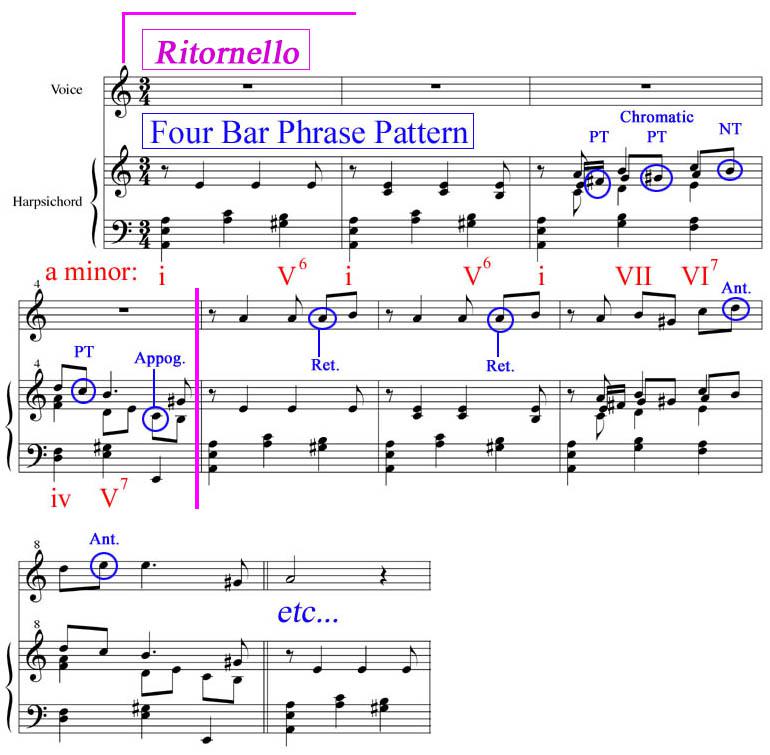
Contrasting B Section. Here we need to create a section with a contrasting profile, yet maintain the overall sense of continuity. This second requirement is fulfilled by retaining the syncopated textural flow from the A section. Harmonically we begin the new section without the usual tonic downbeat associated with the ritornello. Instead it is replaced with an implied deceptive motion (from the preceding final dominant of A to the submediant). A further departure is the first use of a secondary dominant (here hinting at the subdominant region). As with the earlier section, the melody is arrived at through a linear interpretation of the progression. Note the particular use of both pitches from the treble suspension (the chord tone as well as the dissonant one) in the melody. As well, the vocal part is in the lower part of its tessitura (or range) than the refrain.
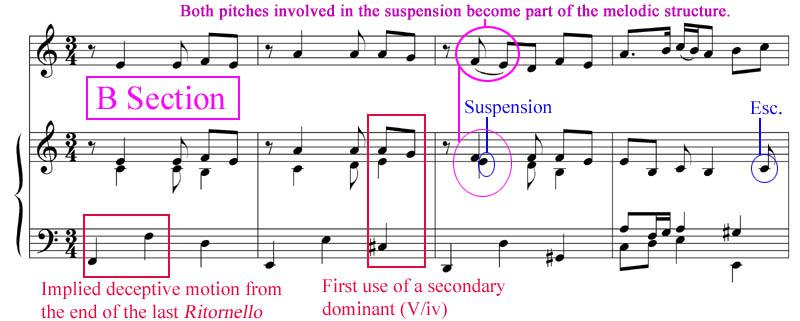
Even More Contrasting C Section. In this part, we have decided to depart more significantly than the character of A than what we did in B. Metrically we have created a
hemiola (the impression of a duple meter within the context of a triple meter) in the first two bars by altering the prevailing harmonic rhythm to a change once every two beats (thus implying a 2/2 meter). This is reinforced by the half note rhythm of the melodic line. The syncopation that has thus far pervaded the texture is wholly absent here. The vocal part and the accompaniment have a more angular contour and an increased use of non-harmonic tones is evident throughout. However, and probably most notably, the subdominant region touched on in the B section is explored fully here through a modulation to d minor. Instead of the usual four-plus-four bar structure, this section contains a continuous seven bar asymmetrical phrase that, in the end, safely returns us to a minor in preparation for a statement of the refrain.
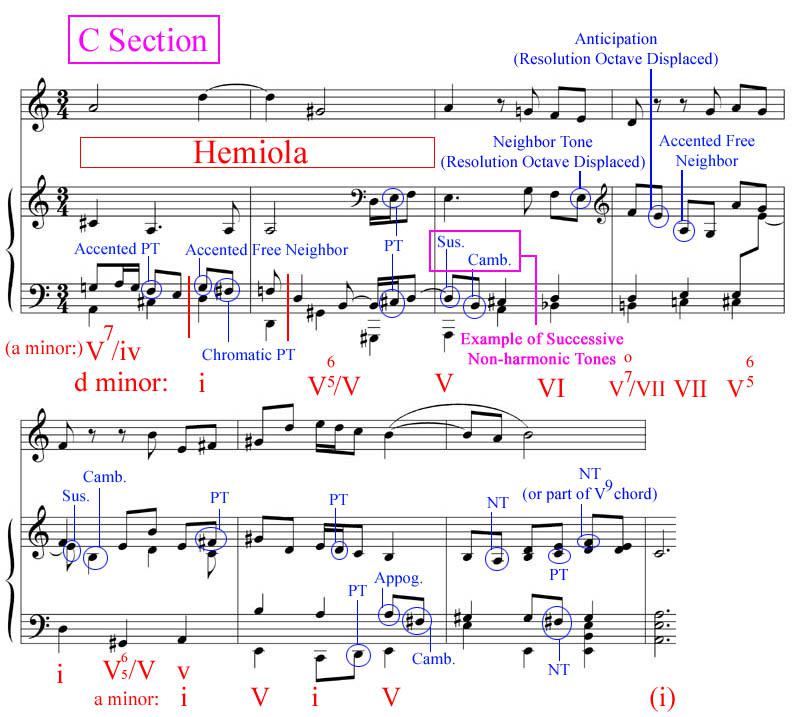
Putting it all together. The following score will illustrate how we can take the three component sections we have composed separately and bring them together to form a cohesive piece. Of particular importance are the contrasting contours and high points of the vocal part as relative to each succeeding phrase (to create a heightened sense of drama). Note the use of metrical stresses to coincide with the natural sound of the text. As well, observe how the reiteration of certain passages of text supports an impression of urgency.
Formally, the piece can be summed up as a five-part rondo variant consisting primarily of a series of eight bar structures (each consisting of two four-bar phrases) with one irregular, asymmetrical section:
AA / AB / AB / C (seven bars) / AA (with codetta)
Listen: Track 23
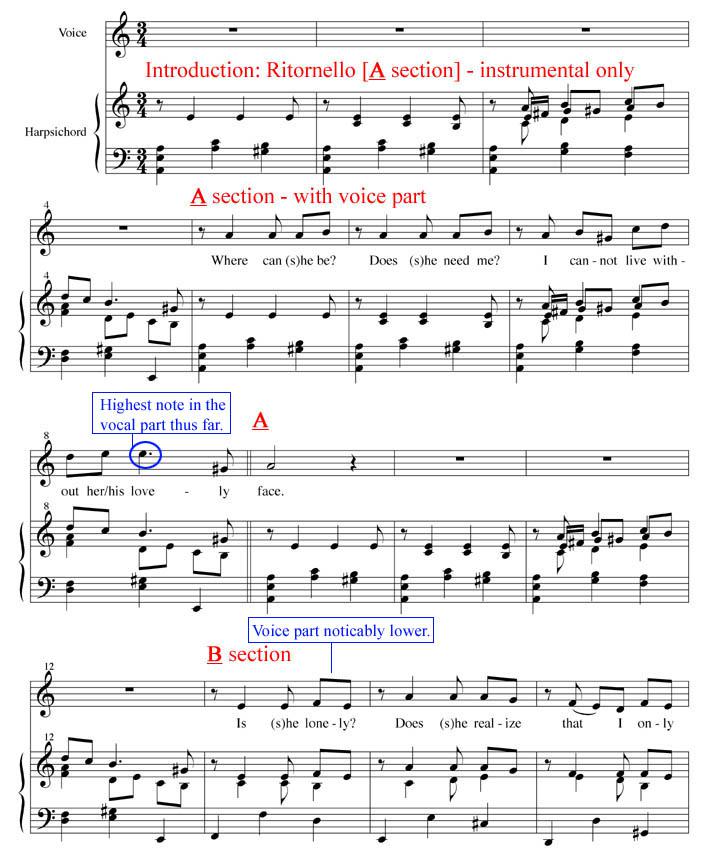
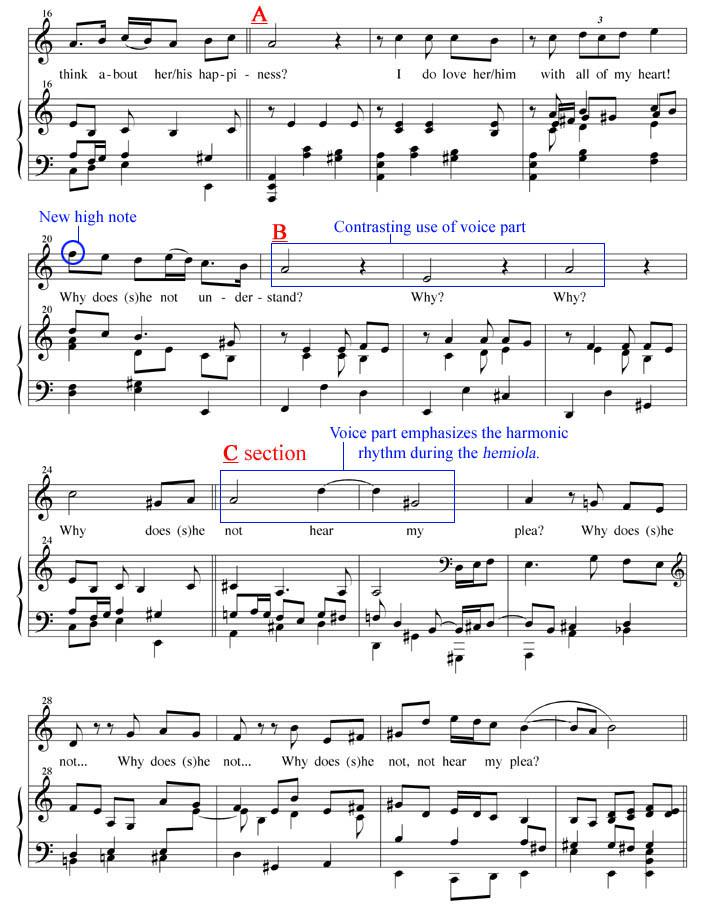
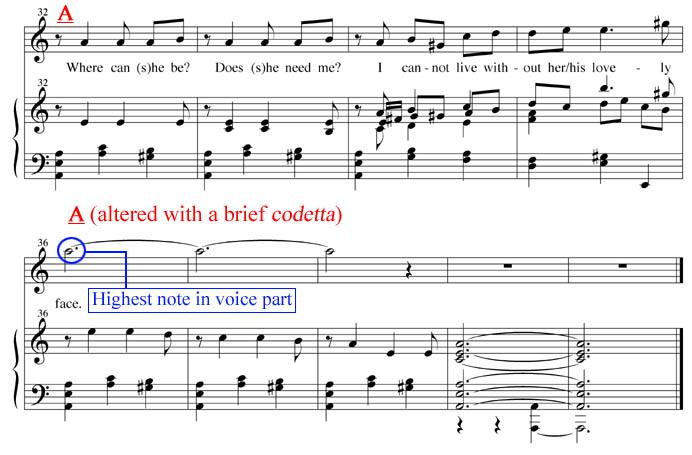
Further Listening:
An outstanding example of this type of song form can be found in Henry Purcell’s final opera, The Indian Queen [Act III] – Duet (Aerial Spirits): Ah! How Happy We Are.

